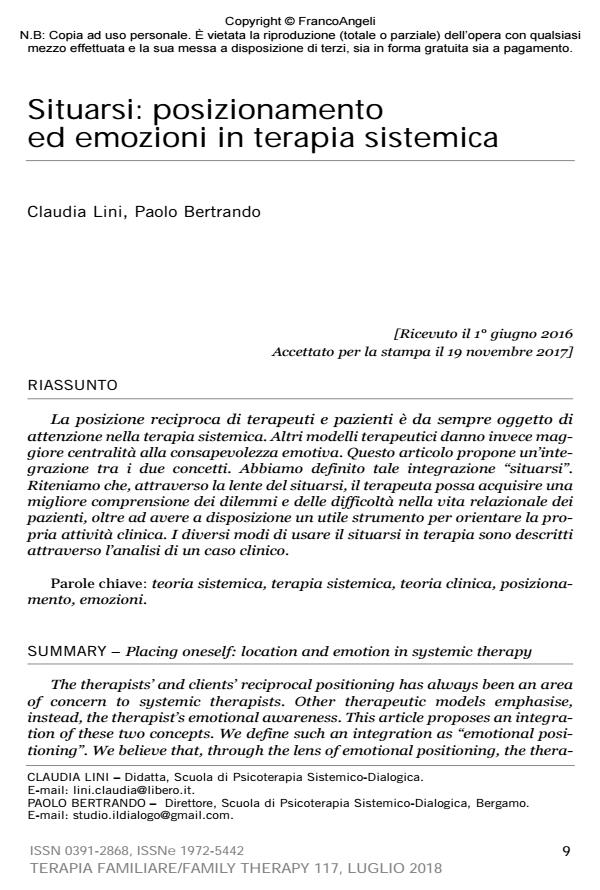Placing oneself: location and emotion in systemic therapy
Journal title TERAPIA FAMILIARE
Author/s Claudia Lini, Paolo Bertrando
Publishing Year 2018 Issue 2018/117
Language Italian Pages 20 P. 9-28 File size 123 KB
DOI 10.3280/TF2018-117002
DOI is like a bar code for intellectual property: to have more infomation
click here
Below, you can see the article first page
If you want to buy this article in PDF format, you can do it, following the instructions to buy download credits

FrancoAngeli is member of Publishers International Linking Association, Inc (PILA), a not-for-profit association which run the CrossRef service enabling links to and from online scholarly content.
The therapists’ and clients’ reciprocal positioning has always been an area of concern to systemic therapists. Other therapeutic models emphasise, instead, the therapist’s emotional awareness. This article proposes an integra- tion of these two concepts. We define such an integration as "emotional posi- tioning". We believe that, through the lens of emotional positioning, the therapist may reach a better understanding of dilemmas and problems in her patients’ relational lives, as well as gain a better orientation for her clinical activity. The ways of using emotional positioning in therapy are illustrated through the analysis of a clinical vignette.
Keywords: Systemic theory, systemic therapy, clinical theory, positioning, emotions.
- Theory and Practice of Systemic‐Dialogical Therapy Paolo Bertrando, Claudia Lini, in Australian and New Zealand Journal of Family Therapy /2019 pp.176
DOI: 10.1002/anzf.1365
Claudia Lini, Paolo Bertrando, Situarsi: posizionamento ed emozioni in terapia sistemica in "TERAPIA FAMILIARE" 117/2018, pp 9-28, DOI: 10.3280/TF2018-117002